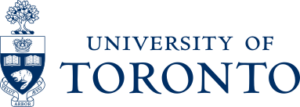This number is not only $4 million beyond the original operational excellence target of $50 million but one year ahead of schedule, Operations Vice-President Scott Maburytold the Tri-Campus Vice-Presidents Group recently.
See the complete report
“This is excellent news, but we can do better, particularly in areas where data technology is leaping ahead, and in our “smart building” improvements and capital project initiatives” Mabury said in an interview. “The sooner we put these ideas into place, the sooner we realize the benefit.”
Mabury stressed that the benefit is not solely economic. “The most important objective is to improve the function and experience for students and all members of the UofT community. Our goal is to make operations smarter, better, faster and more cost effective to align with our academic mission of teaching and research”.
Several elements of the plan involve retrofitting older structures with “smart building” improvements. Lighting has been upgraded at the Thomas Fisher Rare Book Library. The Robarts Library and OISE have new heating, ventilation and air-conditioning features, including state-of-the-art sensors and variable-speed fans. Similar upgrades are planned for the Bahen Centre for Information Technology, the Earth Science Centre and the iSchool.
The most extensive retrofitting was undertaken in the Medical Sciences Building, which was opened in 1969. Improvements in automation systems, thermostat control and variable speed drives have reduced energy consumption by more than 45,000 gigajoules annually and spared the atmosphere of 2,327 tonnes of carbon dioxide emissions. This is the equivalent of taking 1,836 cars of average efficiency off the road and saves the Faculty of Medicine more than $1 million per annum in utilities expenses.
“There is no doubt that systems renewal pays for itself quickly,” Mabury said. “But I am sure that U of T people everywhere are united in their desire to bring operations up to the highest environmental standard. This for me is the ultimate win-win.”
Some improvements have been realized through schedule coordination. “By working with Academic & Campus Events, we have concentrated summer lecture hall use and cut back energy in several large lecture halls,” said Ron Swail of the office of property services and sustainability. “This required no funds, just collaboration.”
Other savings result from upgrades to information technology. Automation supporting research protocols and ethical review administration has saved more than $600,000 a year in staff time, freeing up staff to provide higher-order services to support researchers. With the savings come service improvements.The multi-year replacement of the ROSI online student information service includes the more up-to-date ACORN interface that adds new services while consolidating others to reduce costs. More efficient systems have increased availability to students by reducing maintenance downtime.
“The Degree Explorer and My Research Application tools have made academic life smoother for students and faculty alike”, Mabury said.
Further economies will be achieved through server virtualization – customizing one physical server to perform multiple tasks – and outsourcing email hosting and secure payment services. An extension of the university’s agreement with Microsoft Canada is expected to save more than $2 million in direct costs to students.
Savings are also coming from a new model of capital construction; the university finances and develops properties in partnership with governments, universities and private companies. The recent lease agreement with the JLABS research incubator for a floor in the MaRS west tower is an example of this strategy. Student residences might also benefit from this approach.
Read more about JLABS
“This way of planning and occupying buildings works well on many fronts,” Mabury said, adding that the model has features in common with the public-private-partnership system now favoured for many infrastructure projects involving government support.
“The Toronto PanAm Aquatic Sport Centre on our Scarborough campus is a wildly successful example of a multi-public partnership involving the municipal, provincial and federal governments in the building and co-ownership, with the City of Toronto as operator and manager,” Mabury noted.
Read more about TPASC
Other ongoing improvements include the Library Storage facility at U of T’s Downsview property, which is nearing competition. Built and operated by a consortium of five Ontario Universities (Queen’s, McMaster, Western and the University of Ottawa are the others), this facility will save millions for each of the partners.
There is no question that meeting the Operational Excellence target requires up-front expenditures. It also requires regular review of priorities and processes.
Some of the savings have come from identifying and terminating services that no longer provide much value. “’Can we stop it?’ has become a standard question for evaluating what we do in our portfolio,” said Mabury.
“In many cases the university will be spending money – and substantial sums – to save money,” Mabury said. “But we have studied this portfolio fully and are very confident that acting assertively is in the best interests of U of T students, faculty, staff and all university stakeholders.”

